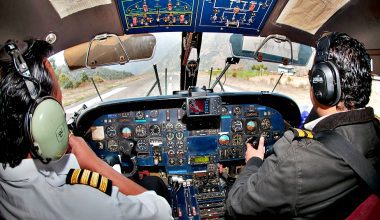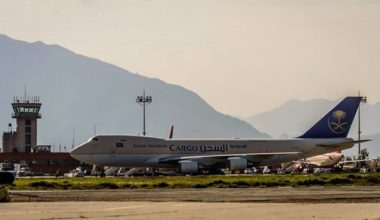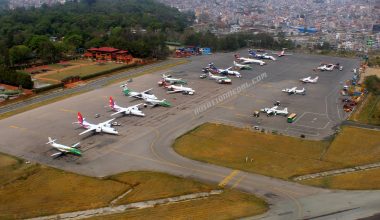Airbus and Boeing are among the world’s best aircraft manufacturing companies, ruling out the aerospace industry for many decades with more orders than any other manufacturer. While making aircraft, both manufacturing companies had many rivalries. Whenever Boeing ever made its aircraft, the Airbus would make aircraft capable of competing against it, and vice versa. So the best examples of rivalries are the Airbus 350 and Boeing 787.
Read More
China predicted to buy more than 7000 commercial aircraft by 2036

Boeing 787
The Boeing 787, also known as the Dreamliner, is a mid-sized, wide-body aircraft manufactured by Boeing Commercial Airplanes. The program was launched on April 26, 2004, with an order for 50 from All Nippon Airways to be launched in 2008. On July 8, 2007, the prototype was rolled out without major systems and experienced multiple delays until its maiden flight on December 15, 2009. The first 787-8 was delivered in September 2011 before entering commercial service on October 26, 2011, with ANA. The aircraft was designed to be more fuel-efficient than its predecessor, the Boeing 767, and succeeded in being 20 percent more fuel-efficient.

Unlike other aircraft, including the Airbus A380 and Boeing 747-8i, which were launched in the early 2000s, the Dreamliner’s strong point was not size but performance. Boeing decided to go smaller with the Dreamliner, planning on taking the twin-engine revolution wave that the manufacturer helped launch the Boeing 777, its best-selling aircraft of all time. It was a high-stakes gamble that would determine the future of Boeing in the industry for years to come.
The aircraft used GE GEnx or Rolls-Royce Trent 1000 engines, making it 20% more fuel-efficient than the 767 engines. All-electric bleed fewer systems are used in these engines, eliminating the need for superheated air ducts generally used for air conditioning, anti-icing, and other functions. The B787 finally flew for the first time on December 15, 2009, marking the start of the next generation aviation revolution and immediately turning out to be obsolete iconic aircraft like Boeing 747 and Airbus A380. After a year and a half of the test flights, the first Dreamliner was delivered to All Nippon Airways on September 26, 2011, almost ten years after its order.

The initial 57 m long 787-8 seats 242 passengers over 13,620 km, with an MTOW of 228 t compared to 254 t for later variants. It is 787-9, 63 m long, and can travel 14,140 km with 290 passengers; it entered service with ANA on August 7, 2014. The further extended 787-10, 68 m long, with 330 seats over 11,910 km, entered the service with Singapore Airlines in 2018.
The flight deck of Dreamliner has dual HUD screens, wide PDF/MFD displays, and looks a bit like a spaceship. The total onboard electrical power of the 787 is 1.45 megawatts. That’s five times as much power as conventional airliners. The size of the windows is the largest of any aircraft to date, 47 by 28 centimeters (or 19 inches high). According to Boeing, this makes the 787 windows 65 percent larger than any other aircraft window.

There are 3 Dreamliner variants, the 787-8 being the first variant to fly in December 2009, the longer 787-9 in September 2013, followed by the longest 787-10 in March 2017.
As of December 2019, there were 864 Boeing 787 aircraft in the airline service. All Nippon Airways (74), United Airlines (60), Japan Airlines (47), American Airlines (45), Etihad Airways (39), Air Canada (37), Qatar Airways (37), British Airways (32), Air India (27) and other airlines were operating less of the type.
Airbus 350
The Airbus 350, also known as A350 XWB, is a family of long-range, large-scale airliners developed by Airbus. The first A350 design was proposed by Airbus in 2004 in response to the Boeing 787 Dreamliner, in the development of new wings and engines. The A350 XWB is the first Airbus aircraft mainly made of carbon fiber-reinforced polymer. It succeeds the A340 and can compete against Boeing’s large long-haul twin jets: the 787-10, then 777, and its successor, the 777X.

Airbus first approved the Airbus 350 program in 2006 in response to the Boeing 777 and 787 Dreamliner programs, which became popular with airlines and highlighted the failings of Airbus in the twin-engine market. Two years before the first flight of the A380s, Boeing had announced that it was developing a new aircraft with only two engines, which had led to the success of the 777. However, later that year, Airbus decided to design a new, clean, two-engine carbon slate aircraft, and the A350 was born in its final form, an effort of $13 billion.
The A350 XWB is the first Airbus aircraft mainly made of carbon fiber enhanced polymer. It had a new fuselage designed around a cross-section of the nine-abreast economy. The airliner has two variants: the A350-900 carries typically between 300 and 350 passengers over a 15,000-kilometre range, has a maximum take-off weight of 280 tons (MTOW); the longer the A350-1000 facilitates between 350 and 410 passengers, with a full range of 16,100 km and an MTOW of 319 tonnes.
Read More
Mumbai bound Singapore Airlines A350 nearly landed on wrong airport
The A350 used only 84,000–97,000 lbf (370–430 kN) of Rolls-Royce Trent XWB power. The A350 includes new composite wings with wingspans that are common to the proposed variants. Its 64.75 m wingspan is within the same ICAO Aerodrome Reference Code E 65m limit as the A330/A340 and Boeing 777. A vital feature of the aircraft would also be included in its full name, A350 Extra Wide Body or XWB, with a cabin width slightly larger than the 787’s at 5.61 meters. The aircraft cockpit would be one of the most technologically advanced aircraft to feature on an Airbus jet, with pilots receiving information from high-definition screens and having access to multiple outdoor cameras.
In June 2011, the Airbus 350-900 was planned to enter service in the first half of 2014, with the-800 to enter service in mid-2016 and the-1000 to enter service in 2017. In July 2012, Airbus delayed introducing the-900 by three months until the second half of 2014. The first delivery to launch the Qatar Airways customer took place on December 22, 2014. The first commercial flight took place between Doha and Frankfurt on January 15, 2015.
As of December 2020, 397 A350 aircraft were in service with 33 operators. The largest operators were Qatar Airways (53), Singapore Airlines (52), Cathay Pacific (40), Lufthansa (17), Fin air (16), Ethiopian Airlines (16), Delta Air Lines (15), Vietnam Airlines (14), China Airlines (14) and other smaller-scale airlines.

If we removed its name from these aircraft, the forthcoming Airbus A350XWB passenger jet could easily be confused with its primary rival, the Boeing 787 Dreamliner. It’ll take a while before you can easily distinguish one from the other. Both aircraft are very well known for their performance. So if we think of flagship aircraft, we think of the Boeing 787 Dreamliner or the Airbus A350. Both represent the very best ideas, cutting-edge technology, and one could even say that they represent the best of Boeing or Airbus. So these aircraft can be stated as the successful aircraft of these decades.





